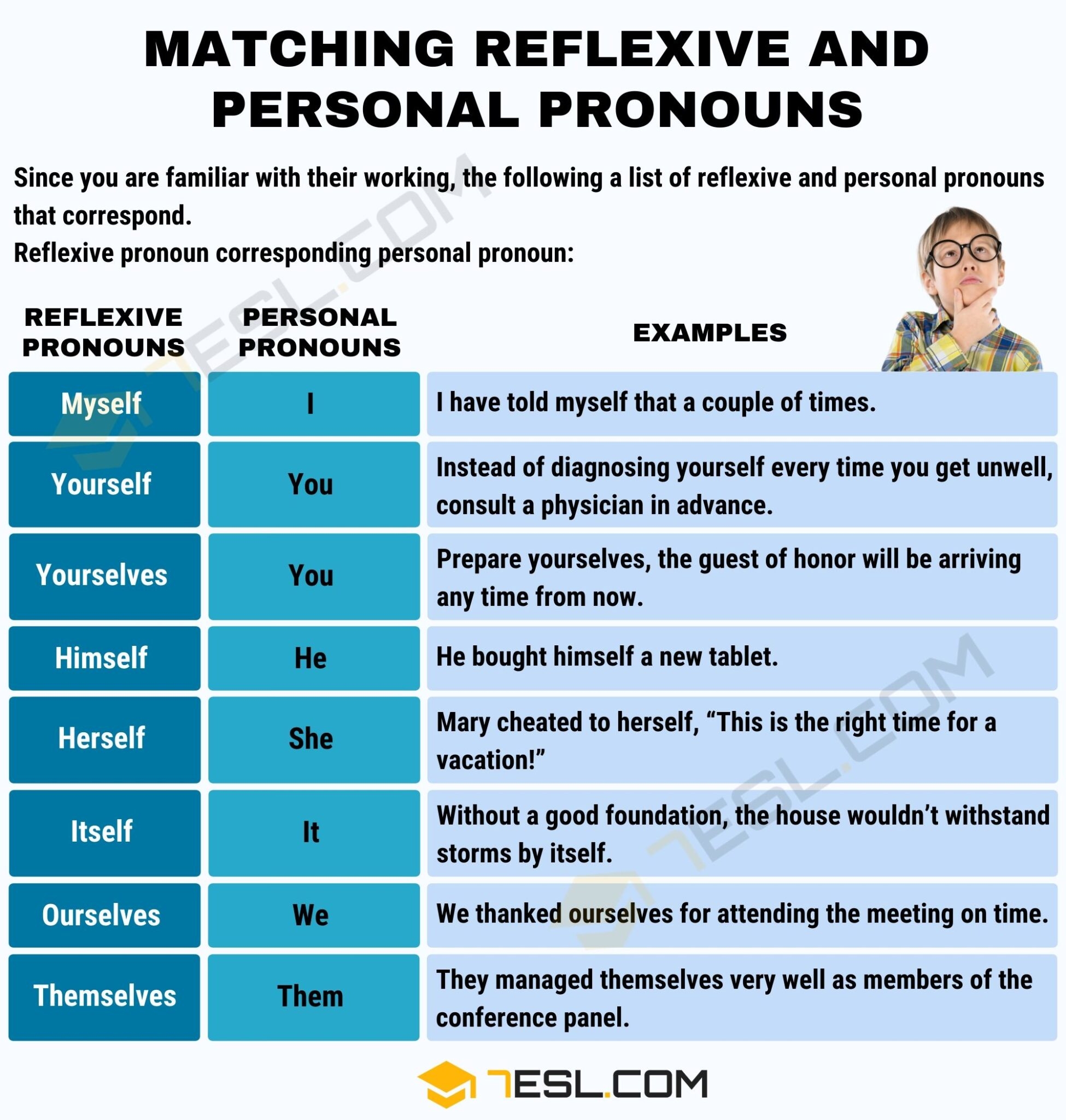Reflexive pronouns are words that end in -self or -selves and are used when the subject and object of a sentence are the same person or thing. Knowing when to use reflexive pronouns can help you communicate more effectively in your writing and speech. Here are some guidelines to help you understand when to use reflexive pronouns.
Reflexive pronouns are used when the subject of a sentence is performing an action on itself. For example, “She dressed herself before going to the party.” In this sentence, the subject “She” is also the object, so the reflexive pronoun “herself” is used to show that the action is being performed on the subject.
Another common use of reflexive pronouns is to emphasize the subject of a sentence. For example, “I made the decision myself.” In this sentence, the reflexive pronoun “myself” is used to emphasize that the decision was made by the speaker and not by someone else.
Reflexive pronouns are also used in sentences with certain verbs that require them, such as “enjoy,” “accustom,” and “pride.” For example, “He prides himself on his cooking skills.” In this sentence, the reflexive pronoun “himself” is used with the verb “pride” to show that the subject takes pride in his own cooking skills.
It is important to be careful not to overuse reflexive pronouns, as using them unnecessarily can make your writing sound awkward or repetitive. Only use reflexive pronouns when the subject and object of the sentence are the same person or thing, or when you want to emphasize the subject of the sentence.
In conclusion, reflexive pronouns are an important part of English grammar and are used to show when the subject of a sentence is also the object, to emphasize the subject, or with certain verbs that require them. By understanding when to use reflexive pronouns, you can improve the clarity and effectiveness of your writing and speech.
